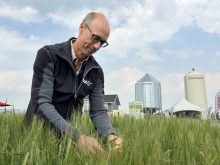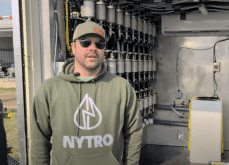Five wineries are testing out a new HACCP food safety protocol for the Canadian wine industry.
The Canadian Vintners Association on Friday picked up $312,000 in federal funding to develop an industry-wide system using the U.S.-developed Hazard Analysis Critical Control Points (HACCP) model. The five wineries are assessing the HACCP materials developed by the CVA in a pilot study, expected to be complete by February 2008.
The CVA, which set up a HACCP committee in June to draft this material, hopes to then make it available to wineries across the country.
Read Also

Alberta Crop Report: Rains in the south, dryness in the north
Rain fell onto the southern half of Alberta last week, while hot and dry conditions persisted in the northern half, according to the province’s crop report released on July 18.
Wine is considered a low health risk because most pathogens can’t survive in its low-pH environment, the CVA noted, but a food safety program can address any concerns that may compromise safety, quality or production efficiency during the winemaking process.
A HACCP model involves analyzing the entire production process for hazards and identifying the critical control points where a control mechanism or process can be added to help reduce or even eliminate safety or quality risk, the federal government explained in a release Friday.
Previous U.S. studies of HACCP for wine have listed such process points as the exposure of the fruit to the sun, fruit maturity, fruit handling, the crushing and de-stemming of grapes, the fermentation process and temperature and storage.
A HACCP system would need to include ways to measure quality indicators at such points, to compare measured values with recommended values, and to include courses of action to help fix any problems.














